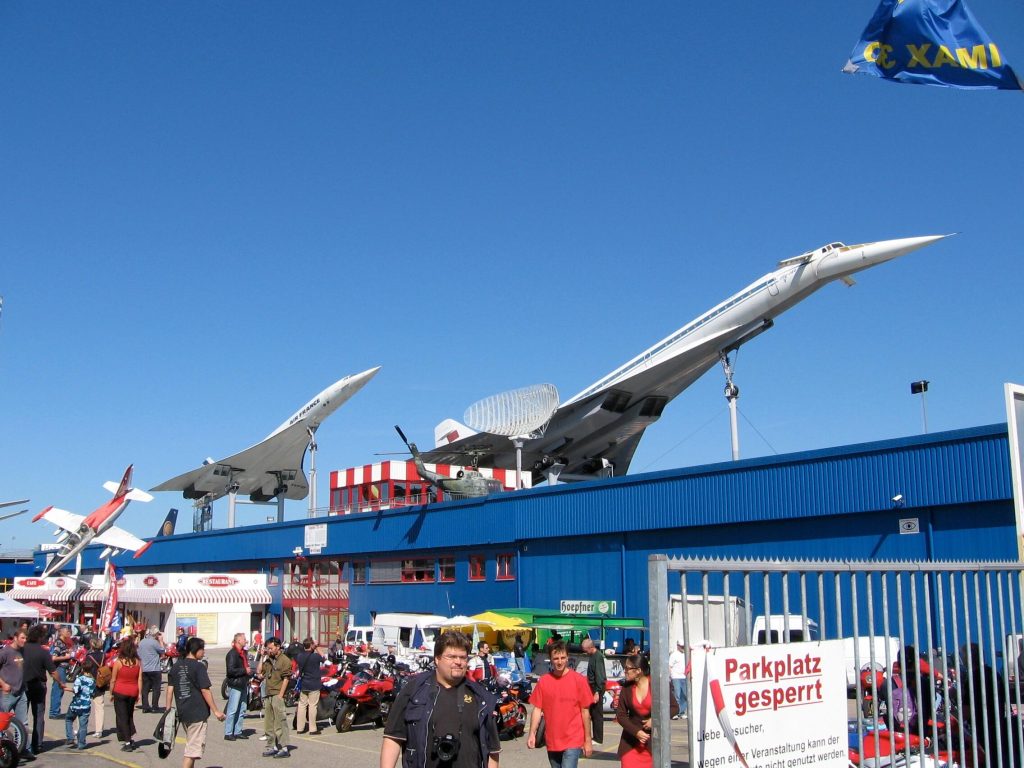The X-59’s “quiet boom” technology could make supersonic commercial flights over land a reality by 2029.
There have been no commercial supersonic flights since the Anglo-French Concorde retired from scheduled service more than 20 years ago. But the U.S. space agency NASA is testing an improved supersonic aircraft model that could ultimately be the prototype for a new generation of supersonic commercial passenger aircraft.
Lockheed Martin is constructing the X-59 prototype for NASA in California and is planning to operate test flights of the aircraft over nearby communities to test the sonic boom-dampening technology it has developed for use onboard the aircraft. The sonic boom is a side effect of supersonic travel—that is, travel faster than the speed of sound. When aircraft break the sound barrier, the shock waves that travel to the earth’s surface can be alarmingly loud, oftentimes rattling windows and chipping glassware or china stored in cabinets.
Until now, sonic booms have also generated noise in excess of 110 decibels, the equivalent of a thunderclap or a large nearby explosion. Because of the sonic boom, Concorde and supersonic military aircraft were restricted to operating faster than the sound barrier only away from populated areas or over oceans.
Concorde’s debut in the United States was delayed several years from when the aircraft first entered service because of concerns about noise pollution, but the aircraft was ultimately cleared to operate from U.S. airports in 1976. Air France and British Airways, the only two airline buyers for the aircraft, flew it reliably across the Atlantic for nearly three decades before Concorde eventually became unprofitable because of high fuel prices and dwindling passenger interest in the high fares required for supersonic travel. Both airlines retired the aircraft from service in 2003.
Continue Reading Article After Our Video
Recommended Fodor’s Video
The X-59, which is projected to fly at 55,000 feet at a cruising speed of Mach 1.4, 925 mph—nearly one and a half times the speed of sound, will muffle the sonic boom to more of a “sonic thump”—roughly equivalent to the sound of a car door closing. This will allow the aircraft to operate at supersonic speeds overland and for a longer portion of the transatlantic crossing than Concorde, allowing it to roughly equal that aircraft’s time between New York and Europe despite its lower supersonic cruising speed (Concorde cruised at Mach 2.02, 1,330 mph).
A ban on commercial supersonic flight in U.S. airspace was lifted in June 2025, paving the way for supersonic flights even to destinations not oceans away.
Commercial supersonic aircraft are already in development. Boom Supersonic, a company with firm orders from United Airlines, conducted a supersonic test of its prototype aircraft in January. The aircraft, which Boom calls the Overture, has 15 firm orders from United Airlines “once [it] meets United’s demanding safety, operating, and sustainability requirements.” The aircraft will operate on 100% sustainable aviation fuel (SAF), and is currently estimated to enter service in 2029.
Boom estimates the Overture will slash flight times from Los Angeles to Sydney to just under nine hours—down from 14 and a half hours today. San Francisco to Tokyo will take just 6 1/2 hours—down from 10 1/2 today. Newark, New Jersey, to London, England, will be 3 1/2 hours. Overture, which will carry 60 to 80 passengers, is planned to operate at Mach 1.7, or 1,304 mph, and also has firm orders from American Airlines and Japan Airlines.
Concorde operated without a passenger fatality for 24 years, from 1976 until 2000, when an Air France charter flight crashed soon after takeoff from Paris Charles de Gaulle Airport. The aircraft was grounded for 15 months while modifications were made, then flew for another two years before being retired for commercial reasons.

